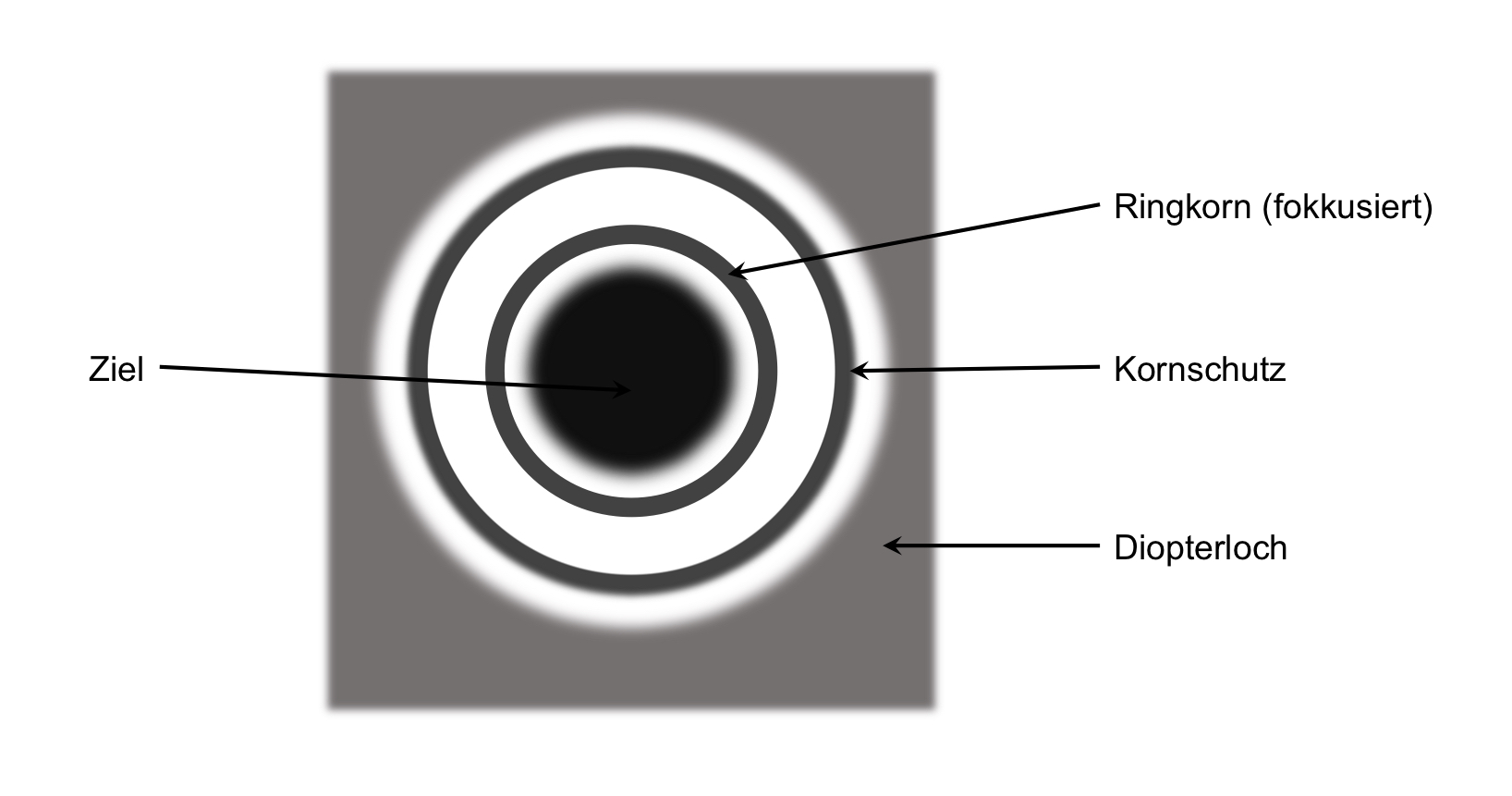Shooting theory 2
- Engelhardt
- 13. January 2019
- 15:45

This article continues the small series on biathlon shooting theory as part of biathlon shooting technique. Basic knowledge of shooting theory is a prerequisite for learning the biathlon shooting technique. They help the athlete to understand his or her own actions in training and competition and thus to apply them more properly.
Unfortunately, the knowledge of biathlon shooting technique is often criminally neglected in the training of young athletes. With this and the following contributions I would like to contribute to the fact that this is no longer the case in the future.
Principles
Shooting theory includes:
- The doctrine of the shot,
- The sighting device and aiming,
- The scattering, the impact pattern and the bullet effect
- Determining the initial values and shot corrections.
This post will present the basics of sighting setup and aiming.
Sighting device and aiming
Sighting device
The aim of the sighting device is to take into account the effects of the factors on the bullet trajectory in such a way that the departure direction required to hit the target can be determined according to height and side.
The biathlon rifles have a so-called mechanical sighting device consisting of a rear sight and a front sight. The rear sight is a perforated rear sight and part of the diopter, which is adjustable in height and side. The front sight can have different shapes and is protected by a front sight tunnel, which serves as another aid in aiming. Both the front sight and the diopter aperture are protected by a spring-loaded flap to prevent the ingress of rain, snow or debris of any other kind. This sight does not have any magnifying elements.
Aiming
Aiming means pointing a gun at the target by height and side with the aid of the sighting device. In doing so, the sportsman forms an imaginary line from the eye over the rear and front sight, to the aiming point.
The imaginary line from the shooter's eye across the sight to the aiming point is called the Line of sight.
The Aiming point is the point to which the line of sight must point for the bullet to hit the target.
When aiming with the mechanical sighting device of the biathlon rifle, the athlete must use the Focus front sight as well as the ring front sight, the front sight tunnel or front sight protection and the rear sight/diopter hole symmetrically around the target. The figure shows the correct aiming pattern schematically.
The process of aiming itself will be covered in a subsequent post.
